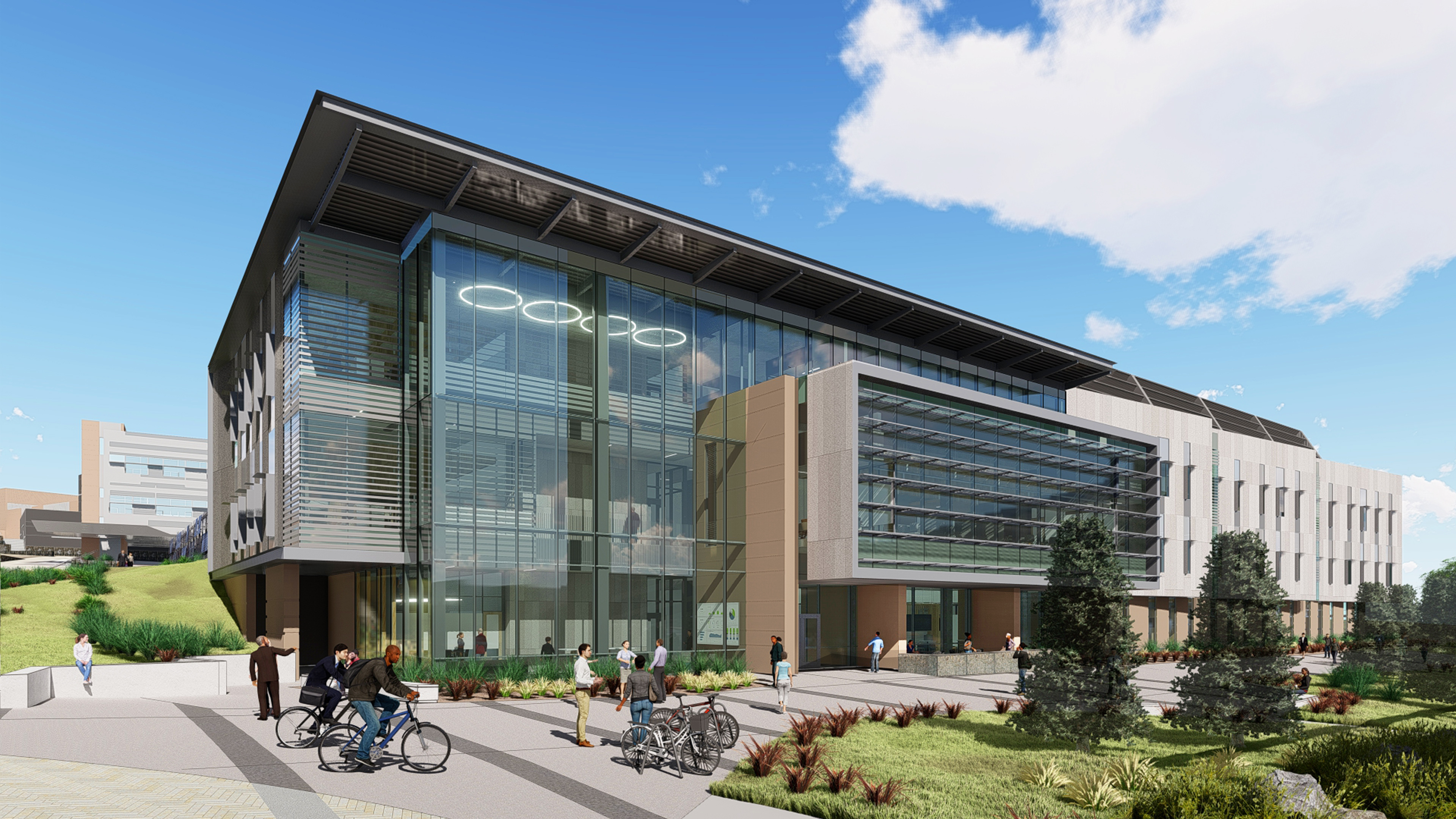The U.S. Department of Energy’s National Renewable Energy Laboratory (NREL) has selected JE Dunn Construction and SmithGroup as the design-build team for a new laboratory facility that will accelerate market-ready products needed for a clean energy transition.
As the new face of NREL’s South Table Mountain Campus in Golden, Colo., the 127,000-sf Energy Materials and Processing at Scale (EMAPS) laboratory will create a direct path from lab-scale materials and process innovations to pilot-scale integration and production. The project is slated to break ground in late 2024.
The laboratory’s design will provide opportunities for engineers, scientists, industry partners, and other DOE laboratories to work together in shared lab facilities focused on clean energy innovations. This collaborative, multidisciplinary approach will accelerate the process scale-up and market adoption of advanced energy materials.
Energy storage, advanced manufacturing among clean energy initiatives
Specifically, EMAPS will enable materials and process innovations in energy storage, advanced manufacturing, grid modernization, and net-zero chemicals and fuels for transportation and industrial decarbonization.
In addition, the laboratory will address end-of-life and circularity challenges across multiple energy technology platforms with a focus on polymers, packaging, and waste streams during and after production.
With building design now underway, EMAP will provide modern, open, and flexible spaces that can accommodate rapid experimentation among researchers. Featuring a three-story collaborative lab and office tower, the center will facilitate flexibility and reconfigurability to serve different research insights and needs. Researchers will be able to move easily from workstation computers to testing in labs to manufacturing testing in pilot bays.
The design will align with NREL’s focus on sustainability, solar orientation and daylighting, energy efficiency, and site preservation. With its sustainable, high-performance design, EMAPS will aim for a minimum of LEED Gold certification.
A decade ago, JE Dunn and SmithGroup partnered with NREL to complete the Energy Systems Integration Facility (ESIF), a 180,000-sf research building adjacent to the future site of EMAPS.
On the Building Team:
Owner: U.S. Department of Energy’s National Renewable Energy Laboratory (NREL)
Design architect, architect of record, and MEP engineer: SmithGroup
Structural engineer: Martin/Martin
General contractor: JE Dunn Construction
Related Stories
Laboratories | Oct 23, 2024
From sterile to stimulating: The rise of community-centric life sciences campuses
To distinguish their life sciences campuses, developers are partnering with architectural and design firms to reimagine life sciences facilities as vibrant, welcoming destinations. By emphasizing four key elements—wellness, collaboration, biophilic design, and community integration—they are setting their properties apart.
Laboratories | Oct 2, 2024
Trends in scientific research environments: Q&A with Flad's Matt McCord
As part of an ongoing series, Matt McCord, AIA, NCARB, LEED AP BD+C, Associate Principal with Flad Architects, discusses the future of the scientific workplace.
Laboratories | Sep 27, 2024
Traditional lab design doesn't address neurodiverse needs, study finds
A study conducted by ARC, HOK, and the University of the West of Scotland, has revealed that half (48.1%) of all survey respondents who work in laboratory settings identify as neurodivergent.
Laboratories | Sep 26, 2024
BSL conversions: A cost-efficient method to support high-containment research
Some institutions are creating flexible lab spaces that can operate at a BSL-2 and modulate up to a BSL-3 when the need arises. Here are key aspects to consider when accommodating a rapid modulation between BSL-2 and BSL-3 space.
Higher Education | Sep 18, 2024
Modernizing dental schools: The intersection of design and education
Page's John Smith and Jennifer Amster share the how firm's approach to dental education facilities builds on the success of evidence-based design techniques pioneered in the healthcare built environment.
Great Solutions | Jul 23, 2024
41 Great Solutions for architects, engineers, and contractors
AI ChatBots, ambient computing, floating MRIs, low-carbon cement, sunshine on demand, next-generation top-down construction. These and 35 other innovations make up our 2024 Great Solutions Report, which highlights fresh ideas and innovations from leading architecture, engineering, and construction firms.
Laboratories | Jul 3, 2024
New science, old buildings: Renovating for efficiency, flexibility, and connection
What does the research space of the future look like? And can it be housed in older buildings—or does it require new construction?
Mass Timber | Jun 26, 2024
Oregon State University builds a first-of-its-kind mass timber research lab
In Corvallis, Oreg., the Jen-Hsun Huang and Lori Mills Huang Collaborative Innovation Complex at Oregon State University aims to achieve a distinction among the world’s experimental research labs: It will be the first all-mass-timber lab meeting rigorous vibration criteria (2000 micro-inches per second, or MIPS).
Healthcare Facilities | Jun 18, 2024
A healthcare simulation technology consultant can save time, money, and headaches
As the demand for skilled healthcare professionals continues to rise, healthcare simulation is playing an increasingly vital role in the skill development, compliance, and continuing education of the clinical workforce.
Laboratories | May 24, 2024
The Department of Energy breaks ground on the Princeton Plasma Innovation Center
In Princeton, N.J., the U.S. Department of Energy’s Princeton Plasma Physics Laboratory (PPPL) has broken ground on the Princeton Plasma Innovation Center (PPIC), a state-of-the-art office and laboratory building. Designed and constructed by SmithGroup, the $109.7 million facility will provide space for research supporting PPPL’s expanded mission into microelectronics, quantum sensors and devices, and sustainability sciences.

















